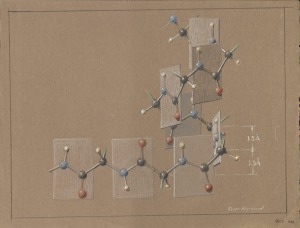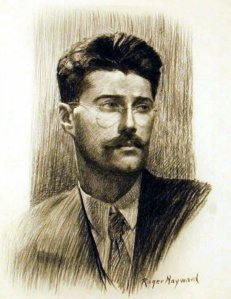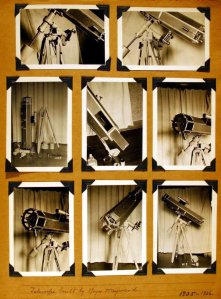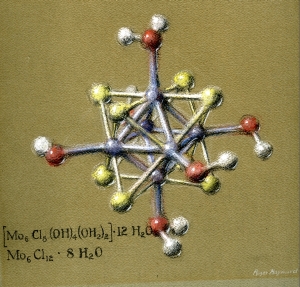
[An exploration of William H. Freeman and the publishing firms that he founded. This is part 6 of 8 and focuses on Roger Hayward’s interactions with Freeman, Cooper & Co.]
Despite the disappointing end to his involvement with the company that he had founded, Bill Freeman worked in the publishing industry for the rest of his life. Post Freeman & Co., he stayed with his new employer, Addison-Wesley, long enough to regain a sense of confidence. With his wife Margaret, he then set about establishing his second independent press: Freeman, Cooper & Company, a name that once again incorporated the Freeman brand, but now also included Margaret’s maiden name.
Rather than limiting the scope of their new firm to a specific discipline as Freeman had done in the past, Freeman, Cooper & Co. published books on a wide range of subjects. While Bill Freeman was still primarily interested in publishing textbooks, he shied away from entering into direct competition with his previous company. As a result, his new venture published books for academic use that were not, strictly speaking, textbooks. And while science remained a key area for the publisher, other areas including psychology and philosophy also began to populate the catalog.

Roger Hayward, ca. 1960s
Though Freeman relished the fresh start, he still recognized the value of retaining past connections. Key among these connections was illustrator and close friend Roger Hayward, whom Freeman approached with a few project ideas in 1971. The first of these ideas was a book that he hoped Hayward would write on “the simpler and fundamental geometry of nature,” intended for use by both introductory and advanced students. He also proposed that Hayward illustrate a different book on crystallography for chemists, and a third book focusing on the chemical elements.
Hayward expressed interest in these projects, as long as Freeman could pay him royalties. Freeman agreed, but warned that the royalties might be small because the audience for each project was likely to be rather specialized. For Hayward, this was a risk worth taking, given that his royalty income from other projects was robust enough to absorb a potentially low payout from these new ventures. Having arrived at this understanding, Freeman’s only additional request of Hayward was that he not complete illustrations for any rival publishers. This was also an easy request to fulfill as Freeman, Cooper & Co. were engaged in direct competition with only a few other firms.
Their agreement in place, Hayward set to work on new illustrations and an early draft for his geometry of nature book, contacting Freeman regularly to keep him apprised of his progress. By this point in his career, Freeman no longer held his authors to strict deadlines, so long as they did a good job of staying in touch. In their exchange of letters, Freeman provided gentle guidance to Hayward as he developed his text. When Hayward broached the idea of including anecdotes from his personal life in the book, Freeman expressed reluctance. And while he ended up telling Hayward to proceed, he advised caution: too much autobiography could harm an author’s academic authority, he felt, though the right amount of personal narrative could work to forge a deeper connection with students.

Drawing of a Cooper Structure as published by Ruth Walker in October 1973.
Once Freeman had piqued Hayward’s interest with these smaller projects, he unveiled the idea that he was most excited about, an organic chemistry manuscript by Ruth Walker, a chemist at Hunter College. Hayward enthusiastically agreed to provide illustrations for the text, but soon became enmeshed in a familiar set of struggles: when Walker raised concerns about Hayward’s initial drafts, the illustrator refused to make changes.
Most of Walker’s concerns were over small or superficial details in the illustrations, but a particularly contentious debate ultimately led to a significant advancement. As part of his portfolio for the Walker project, Hayward had created a paper model of a tetrahedron that was designed for students to tear out and construct into own molecule. While on board with the idea, Walker claimed that the instructions that Hayward had written were inaccurate and that the overall design was ineffective.
Unable to resolve the debate themselves, Walker and Hayward brought the matter to Freeman. The publisher was intrigued by Hayward’s unique design, but agreed with Walker that it would be difficult for students to follow the instructions that Hayward had provided. As a means of clarification, Freeman suggested a minor modification – the addition of dotted lines to indicate the direction in which students should bend the model. He also promised Hayward that he would collect more authoritative opinions from accomplished chemists and reconvene with him before the publication of the text.
Several of the chemists that Freeman contacted agreed that Hayward’s model was unique and had potential as a teaching tool. When Freeman relayed this feedback to Hayward, the illustrator immediately took steps to patent his design. Freeman assured him that the copyright protecting the material in the book would be sufficient for this purpose as well.

Once it was established that Hayward and, to some extent, Freeman had created something new, Freeman’s associates in the scientific world went about naming the structure. They eventually settled on the Cooper Structure, an obvious source of frustration for Roger Hayward. Peeved, he crafted a short memo to Freeman that was written in the large, bold typeface that he had adopted as a result of worsening eyesight. “For goodness’ sakes,” it read, “What’s wrong with the Hayward Structure?”
Freeman replied that the Hayward Structure was actually the first name that had been proposed, but that the group of scientists couldn’t arrive at a consensus. Some other names they tried included the Freeman Structure, a hopper crystal, a starved tetrahedron (because of the model’s concave sides), an inverted dodecahedron, an instellated polyhedron, a Texas Tetrahedron, and a Cooper Crystal. The Cooper Structure was the name that everyone ultimately agreed upon. Hayward belatedly suggested the HFC Form – for Hayward, Freeman, Cooper – but his suggestion was largely ignored.
Changing tactics, Hayward once again began investigating a patent, arguing that copyright protections simply prevented anyone from publishing the design. Freeman remained sympathetic to Hayward’s feelings, but firm in his resolution that a patent was not necessary. As time moved forward, Hayward sensed that he was losing the fight and that the process had moved beyond him. In fact, because Freeman’s modification is what made the model effective, Ruth Walker gave him credit for the discovery. In a Journal of Chemical Education article, she wrote
A unique model for illustrating the tetrahedral geometry of sp3 bonding is obtained when the pattern in the figure is cut out and assembled…the resulting structure is a tetrahedron with four recessed faces and a central hole, and has been named the Cooper Structure. Each face is recessed in such a way as to produce a model that clearly shows the relative position of four bands extending from the center of a tetrahedron, one towards each apex. This model was designed by William H. Freeman for inclusion in ‘Organic Chemistry: How to Solve It (I. Molecular Geometry)’ by Ruth A. Walker, after Mr. Freeman observed models made by Roger Hayward, the illustrator of the organic workbook published by Freeman, Cooper and Co. in 1972.
Hayward was somewhat placated by the wording of the article, which let him claim a share of the credit for the design. He proceeded to recommence work on his geometry of nature book, but never finished it as his health problems increased in severity.
Meanwhile, Bill Freeman was also experiencing his share of setbacks. Just before the Cooper Structure conundrum arose he was hospitalized for exhaustion, which slowed production considerably and led to a period of prolonged discouragement. In a letter to Hayward, he made reference to “hurdles, disappointments, problems and shenanigans that I dare not put into print.” And for all the fuss that it caused, Ruth Walker’s book, Organic Chemistry – How to Solve It, sold only 11,000 copies.
Over the course of its history, Freeman, Cooper, and Company experienced moderate success, but never achieved the same fame as its predecessor. Many of the authors who had found their niche at W.H. Freeman & Co. remained loyal to the original company even after its namesake had moved on; indeed, with the notable exception of Roger Hayward, Bill Freeman built his new company largely from scratch. He insisted though, that modest successes did not diminish his passion for the independent press. After he passed away in 1992, Margaret took over the firm and ran it smoothly for a few additional years before letting it go to become another piece of publishing history.
Filed under: Colleagues of Pauling, Roger Hayward | Tagged: Roger Hayward, W. H. Freeman | Leave a comment »







































